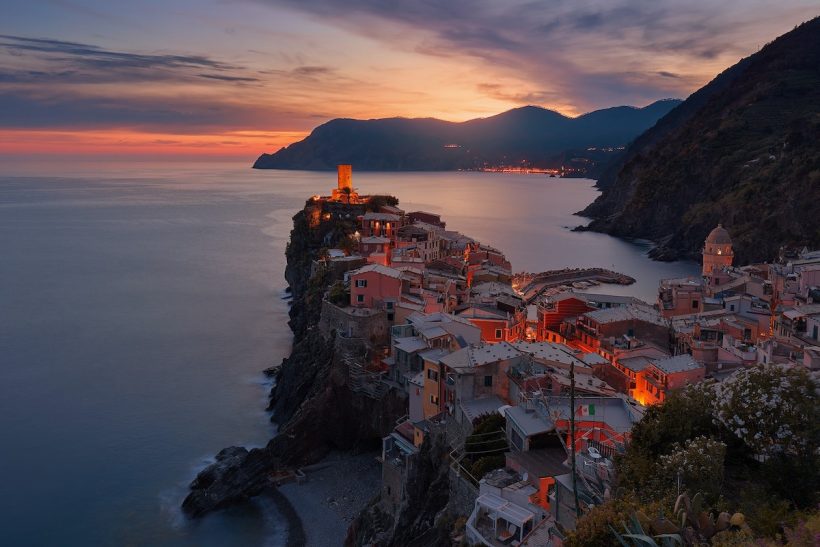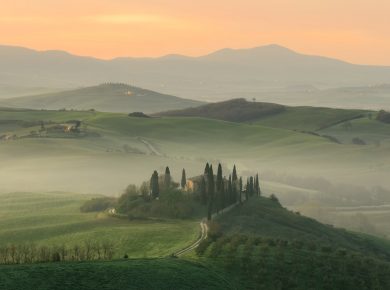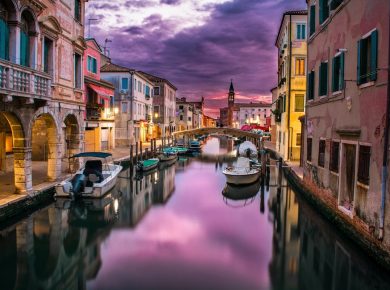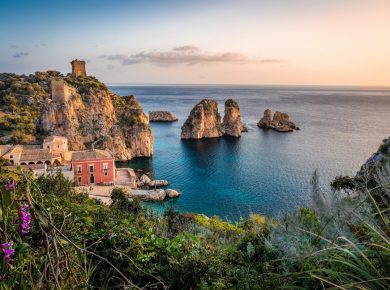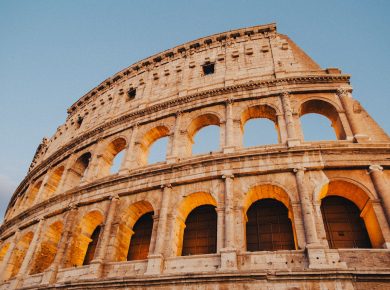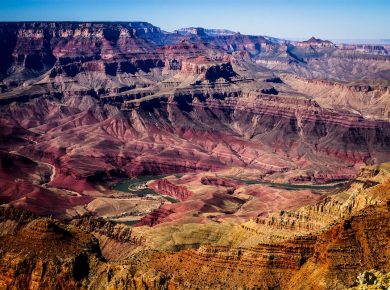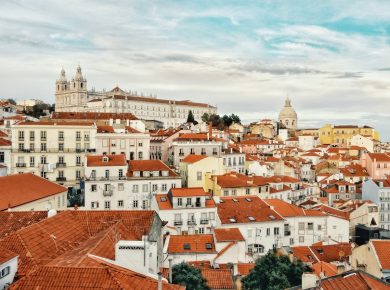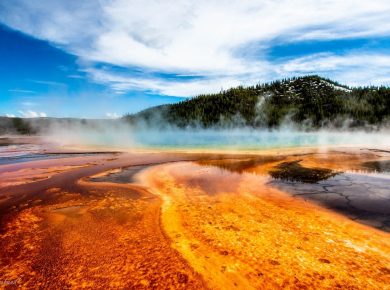Italy offers everything a tourist could want. Delicious cuisine, stunning nature, and some of the most revered art collections of all time are among the things that make it one of the most sought-after destinations in the world.
Each region has its distinct culture and landscape that make them all worth visiting, from the Mediterranean climate found in Naples and Sicily to the lush, rolling hills of Tuscany. However, with this legacy comes a tidal wave of tourists filling the country’s museums and trattorias.
The best months to visit Italy for the cheapest air flights are February and November, and both have lower tourist numbers than other months. However, rain can be an issue in both. For warm temperatures and a lower chance of precipitation then considering traveling to Italy in March.
Italy’s massive tourist industry takes fifth place among the most visited countries in the world. It can be challenging to plan your visit to avoid the average of 65 million tourists who visit year-round. Don’t be surprised to see hundreds waiting to get inside Rome’s Colosseum in the middle of winter. The hustle and bustle of the country’s tourism may sometimes slow down, but it hardly sleeps.
What’s more, Italy’s landscape is home to several climate zones and, therefore, vastly different weather patterns across the country at any given time. An idyllic summer’s day in one place may be a rainy nightmare in another. Knowing whether the cities you book are compatible with the seasonal weather is essential.
This article assesses the average weather and tourist season trends to determine the best month to visit Italy for good weather and low prices. To do this, we will look at four cities spread throughout the country: Rome in the center, Palermo to the south in Sicily, Milan to the northwest, and Bolzano to the northeast.
Table of Contents
Average Temperature In Italy
Like other Western European countries, Italy enjoys warm temperatures for a long time, and winters are bearable with a light jacket. Extreme temperatures are uncommon. Fall and spring are typically mild as well.
Rome’s summers are the hottest, with an 89°F peak high and 66°F low mid-July. Palermo and Milan hover just below Rome, but Palermo has the hottest summer nights, with a low of 74°F in mid-July. Bolzano gets the coolest summer temperatures with 83°F highs and 61°F lows at the same time as the others.
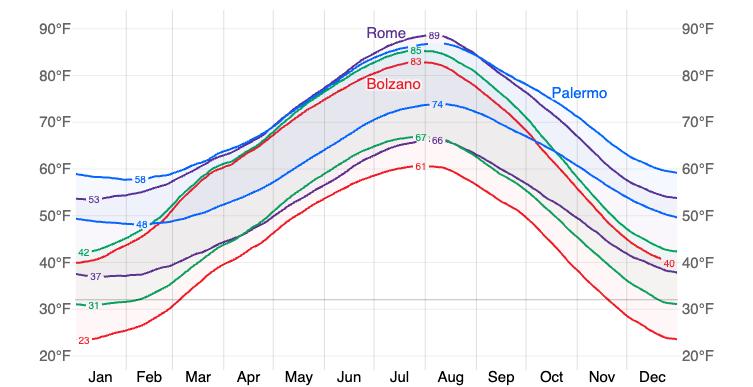
Winter sees a considerable change in temperature in some cities. With its Mediterranean climate, Palermo is the place to be if you hate the cold! In February, its coldest month, temperatures range from 58°F to 48°F.
At the foot of the Dolomites mountain range, Bolzano gets the chilliest winter weather. In January, its temperatures range from 41°F to 24°F.
Roman winters are milder, like Palermo, but still colder, ranging from 54°F to 37°F in January. Milan is even colder in January as its temperatures range between 43°F and 31°F.
Spring is relatively mild across the country, with temperatures slowly ascending. By mid-March, Bolzano and Milan escape their frigid winter temperatures and are almost as warm as Rome (read more about the best month to visit Rome) and Palermo. Autumn sees all cities gradually descend into winter temperatures, except for Palermo, which dips down slightly.
Daily Chance Of Precipitation In Italy
The amount of precipitation varies drastically based on geography and season. Italy generally doesn’t have one clear-cut dry or wet season, so it’s crucial to look at localized weather patterns.
Bolzano is the rainiest city, especially in summer when it averages 12.5 wet days in June. Milan also gets a sizable amount of precipitation in these months but peaks earlier in May with an average of 10.2 wet days, then drops slightly.
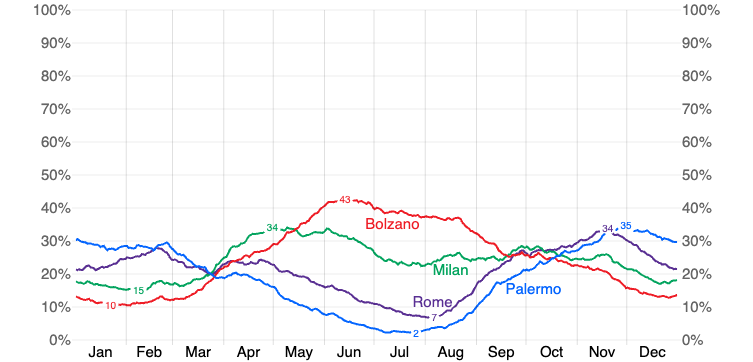
Hitting Italy in the winter? Expect snow up north. Milan gets a sizable amount of snowfall in the winter and has a steady amount of rain the rest of the year, with a peak of 10.2 wet days in May. Bolzano’s winters are no drier than the summers, with December and January both receiving around 2 inches of snowfall on average.
On the other hand, Rome and Palermo have dry summers and are wetter in the rest of the seasons. In the autumn, when the precipitation levels in Bolzano and Milan even out, Rome and Palermo get soaked! The rate climbs from August through November, peaking at 9.5 wet days in Rome and 9.8 for Palermo in December.
Humidity Comfort Levels In Italy
Though warm and wet most of the year, Italy isn’t muggy all the time! There is a clear humid weather season, and it coincides with summer. Picking up in May with the muggiest cities finally mellowing out in late October, summer can make for an uncomfortable visit.
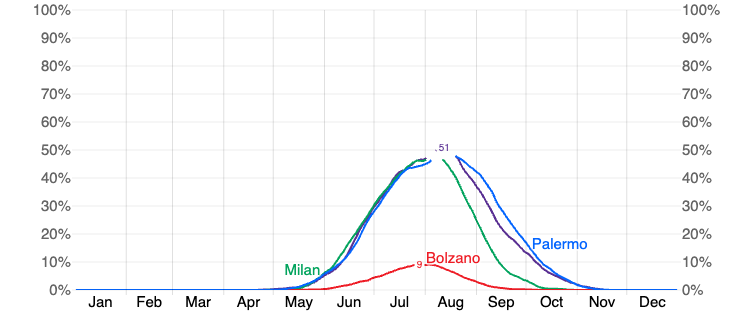
August is the worst month for humid weather haters, with 14.3 humid days on average in Rome, 12.3 in Milan, and 14.4 in Palermo. Statistically, humidity dominates these cities half the time in summer.
Bolzano mostly escapes humid weather, with only an average of 2.3 humid days in July, its worst month.
Best Time Of Year To Visit Italy For Great Weather
Italy’s unique weather patterns are both a blessing and a curse. Is there one perfect season to visit? Certain seasons which make for impeccable weather in some regions, bring downpours and swampy weather to others. If making one grand voyage across this boot-shaped paradise, you’ll have to prepare for all types of weather.
Two factors are used to decide the best months for weather: the “tourism score” and the “beach/pool score,” respectively. The first is used to determine how pleasurable outdoor activities like sightseeing tours are in a given month. Clear skies and temperatures between 65°F and 80°F are the criteria here.
The four cities’ respective tourism scores are skewed, which is to be expected given the vast range of temperatures and precipitation patterns. Palermo and Rome are best for sightseeing and walking in June, with scores of 8.1 and 7.6, respectively.
Milan ranks slightly lower and much later, with a peak score of 7.3 in September. Bolzano has the lowest tourism score of the four, with 6.8 in mid-August.
The beach/pool scores are more uniform among the four, with the late summer months of July and August being the best time to relax by a villa pool or in the Adriatic or Mediterranean seas.
Palermo has the best conditions for a beach or pool day, with a score of 9.2 in July. Rome and Milan fall right behind in the same month with 8.5 and 7.6. Save your pool day in Bolzano until August because it peaks with a score of 6.3.
If sightseeing and city tours are your end goal on your Italy trip, then consider prioritizing a few cities in one region with favorable weather. If kicking back by the pool is what you need, then the summer months are for you!
Best Time Of Year To Visit Italy For Low Prices
Italy isn’t known as a budget traveler’s hub, but there are ways to save if you book for the right time of year. Finding a cheap, time-efficient flight may be challenging depending on what time of year you plan to visit.
Luckily, budget airlines like Ryanair and Wizzair have boundless connections to destinations all over the country from Europe. You can easily tack a few Italian cities onto your European backpacking trip itinerary. Deals are always around the corner if you book early. Usually, even one month before the trip, prices are relatively low.
If coming from overseas, unfortunately, these flights, sometimes as low as $10, don’t exist. The season you fly impacts the price significantly. Airfare prices skyrocket when American schools are let out for vacation.
November and February are the cheapest months to fly to Italy. Prices drop as low as $500 round-trip. You can expect to pay more than double this if visiting in July.
Both months usually witness a decline in tourists, so they’re your best chances of scoring a hotel deal in cities like Rome, Milan, and Palermo.
Bolzano, getting heavy snowfall in winter, becomes a hub for skiers and other winter athletes this season. Cities near resorts experience peak season this time of year, so if going from Rome to Bolzano, you’ll likely notice a spike in prices in the winter.
Peak Travel Season In Italy
Of the 65 million tourists who visit Italy annually, about 39 million come in the summer months. Tourist attractions and the seaside will be packed to the brim with people from all over. From late May to September, your vacation in Italy will be crowded, hot, and pricey.
Luckily, not all summer is madness. August experiences a lull in tourist traffic, so this is your best time to beat crowds. However, your search for hotel deals may be fruitless, as peak season prices usually persist.
A few holidays outside summer cause peak season-like conditions. Rome and Florence abound with tourists around Easter, especially in Rome around The Vatican. The Holy Week leading up to the holiday will cause closures and swaths of people observing.
Venice’s Carnevale is another huge draw. Taking place 40 days before Easter, like Mardi Gras, it’s a massive celebration that causes a spike in visitors during an otherwise quiet season. A visit during this time will surely be a unique experience, but book your accommodations in advance!
Christmas doesn’t attract a significant number of tourists. Still, the week between Christmas and the New Year is a break from school and work that many take advantage of. Expect lots of sightseers and partiers. Winter destinations like Bolzano and Turin experience peak seasons during the cold months, so their price trends are the inverse of places like Rome or Palermo.
Shoulder Travel Season In Italy
Italy’s shoulder seasons are shrinking, with more budget flight routes opening up on the peripheries of peak season every year. Potential tourists want to take advantage of the deals and good weather, and as a result, these deals are few and far between. Finding that ratio of mild weather to mild crowds can be tricky but not impossible!
Although less crowded than summer, autumn is too busy to be considered the shoulder season. September is even considered peak season still. October is relatively quiet and budget-friendly, but the weather has already cooled off to low-season temperatures by November. Autumn as a shoulder season is now mainly limited to October.
March and April bring relatively mild weather to the peninsula, and most tourists still hold out for warmer days. Accommodation deals are available, so traveling in spring will ensure you lower prices and smaller crowds. August is another shoulder season for larger cities. Schools and offices are both on vacation, and families escape the worst of the summer heat by going abroad or heading to the seaside. The prices stay at peak season level but expect smaller crowds in the cities.
Low Travel Season In Italy
Italy’s off-season is the most clear-cut, with the cold period of late November through February seeing the lowest tourist numbers on average. You’ll find the cheapest flights from North America at the beginning and end of the season. Furthermore, accommodations are most affordable throughout this period.
Temperatures in famous sightseeing destinations like Florence and Rome have lower temperatures. Unlike summer tourists, you can spend more time visiting various city districts without burning up in the sun.
Though the weather may be cooler, your chances of getting rained on go up! The daily chance of precipitation in southern cities like Rome and Palermo increases significantly. Don’t let this scare you away from a winter visit, though! Wet days still make up less than half the month at their worst in November and December. Bring a raincoat, and your walking tour will still be a blast.
However, due to the mild winter temperatures in some cities, don’t be surprised to see crowds at major attractions in cities like Rome. Many of them require booking tickets with time slots in advance. Even in February, you can miss out on Rome’s Pantheon or Sistine Chapel if you wait to buy tickets at the gate.
Best Months For Travel To Italy
Each of Italy’s seasons has many opportunities for visitors to make their dream vacation come true. The best time to visit depends largely on what type of travel you like to do.
If sightseeing in big cities is your goal, you have several options. February and November are historically the cheapest months to fly, and both have lower tourist numbers than other months. However, rain can be an issue in both.
March is another shoulder season with warm temperatures and a lower threat of precipitation. If you book in advance, your flight can be as cheap as in February!
Attractions don’t close at this time, and they hardly slow down, so you can experience everything you would if coming in the summer. Just don’t forget to book the attractions you want to see before you go.
Are you more interested in hitting the slopes? Winter is your time, then. Though resorts are sure to be crowded and pricey, expect to save by flying into the country during the low season.
